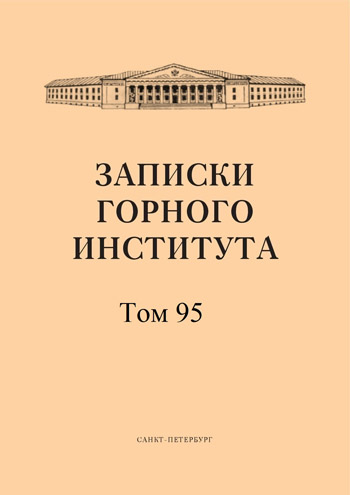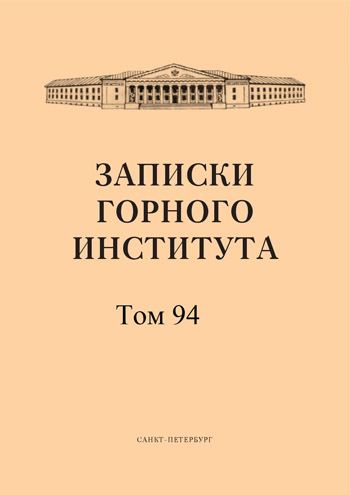-
Date submitted1981-09-21
-
Date accepted1981-11-23
-
Date published1982-10-29
Fundamentals of the theory and calculation of pressure during foam movement in a borehole
- Authors:
- B. B. Kudryashov
- Yu. D. Muraev
- V. Ya. Klimov
Foam is one of the varieties of flushing agents, especially promising when drilling wells in complicated conditions. Practical development of this affective technological means requires a well-founded by calculations selection of pumping and compressor equipment, design of rational modes of circulation ...
-
Date submitted1981-09-25
-
Date accepted1981-11-27
-
Date published1982-10-29
Regularities of the process of deep type well drilling in ice
- Authors:
- B. B. Kudryashov
- A. M. Shkurko
The main indicator characterizing the drilling-melting process is the drilling speed. At thermal method of drilling speed is a generalizing indicator, depending on the power supplied to the crown-heater, axial load, geometric shape of the crown, the conditions of removal of fracture products, from the thermophysical properties of the material from which the crown is made, and the properties of the melted rock (ice) ...
-
Date submitted1981-09-03
-
Date accepted1981-11-05
-
Date published1982-10-29
Efficiency of foam application in drilling for solid minerals
- Authors:
- A. M. Yakovlev
- V. I. Kovalenko
- A. V. Golovkin
The branch laboratory of TTRB together with production geological associations has carried out a large amount of work on the introduction of foams as a cleaning agent ...
-
Date submitted1981-09-27
-
Date accepted1981-11-01
-
Date published1982-10-29
Application of foam agents in diamond drilling
- Authors:
- L. K. Gorshkov
- Yu. D. Muraev
- V. I. Vasiliev
Specific properties of foams is their low density, low erosive effect on the walls of the well, increased in comparison with water carrying capacity, etc. ...
-
Date submitted1981-09-06
-
Date accepted1981-11-20
-
Date published1982-10-29
Estimation of efficiency of the method of accelerated well plugging
At geological exploration drilling for elimination of all kinds of complications is spent up to 25% of the calendar time of work of drilling rigs, and drilling productivity in some cases is halved ...
-
Date submitted1981-09-10
-
Date accepted1981-11-09
-
Date published1982-10-29
Calculation methodology of drill pipe threaded joints in exploration drilling
- Authors:
- I. G. Shelkovnikov
Currently, when drilling exploration wells for solid minerals are used drill pipe industry standard CH4I-I-68 nipple and socket-lock connection, as well as pipes for drilling shells with removable core collectors SSC-45 and SSC-59, connecting "pipe to pipe", developed by the All-Union Scientific Research Institute of Methods and Techniques of Exploration (VITR) ...
-
Date submitted1981-09-02
-
Date accepted1981-11-13
-
Date published1982-10-29
Analysis of temperature regime of geothermal wells
- Authors:
- Yu. M. Pariysky
- N. A. Gavrilov
In the general complex of exploration works for the development of geothermal resources drilling of wells is the most complex, labor-intensive and expensive type of work ...
-
Date submitted1981-09-11
-
Date accepted1981-11-09
-
Date published1982-10-29
About some peculiarities of pneumatic percussion drilling with gas-liquid agents
- Authors:
- N. D. Mikhailova
One of the modern high-performance methods of drilling in rocks of UII-XII categories of drillability is percussive rotary drilling with the help of submersible pneumatic percussion drills ...
-
Date submitted1981-09-15
-
Date accepted1981-11-04
-
Date published1982-10-29
Drilling-melting of rocks
- Authors:
- V. K. Chistyakov
A new promising direction of increasing the efficiency of well sinking in difficult geological and mining conditions is the development and improvement of physical methods of rock destruction, one of which is melting ...
-
Date submitted1981-09-13
-
Date accepted1981-11-22
-
Date published1982-10-29
About development of special drilling muds for drilling Antarctic ice sheets
- Authors:
- V. M. Pashkevich
- V. K. Chistyakov
With increasing drilling depths, the rheological properties of rocks composing the borehole walls become increasingly important. As a result of unloading on the side of the borehole, passed in a stressed rock mass, a zone of redistribution of normal stresses ...
-
Date submitted1981-09-18
-
Date accepted1981-11-07
-
Date published1982-10-29
Study of RP-111 pneumatic percussion hammer operation on gas-liquid mixtures with surfactant additives
Currently, the most productive method of drilling exploration wells with air blowing is pneumatic percussion drilling. In 1979 about 200 thousand meters of wells were drilled by this method during exploration of mineral deposits ...
-
Date submitted1981-09-23
-
Date accepted1981-11-29
-
Date published1982-10-29
On correlation of well wall stability with carbonateness of clayey rocks
Argillites of the Exploration Formation of the Talnakhskoye field, known as "shooters", often collapse in the borehole of drilled wells. Previous studies have focused on identifying the causes of argillites instability, studying their mineral composition ...
-
Date submitted1981-09-30
-
Date accepted1981-11-05
-
Date published1982-10-29
About increasing the resource of diamond drill bits
- Authors:
- E. I. Bychenkov
- N. E. Tikhonov
Diamond drilling is the most efficient way of sinking exploration wells. This is due, first of all, to the extremely high strength of diamonds used as rock-destroying elements ...
-
Date submitted1981-09-18
-
Date accepted1981-11-27
-
Date published1982-10-29
Use of shells with interchangeable core receivers for work with submersible drilling rigs
- Authors:
- V. Ya. Kipovsky
- V. N. Yakovlev
Currently, there are two main options for offshore exploration drilling: drilling from floating vehicles specially adapted or created for such works, and drilling directly from the bottom by special submersible drilling rigs ...
-
Date submitted1981-09-01
-
Date accepted1981-11-30
-
Date published1982-10-29
Technique and technology of drilling with CCC complexes
- Authors:
- V. P. Onishchin
- V. G. Vartykyan
With the existing methods of drilling, the growth of labor productivity is largely constrained due to the large amount of time spent on performing round-trip operations …


